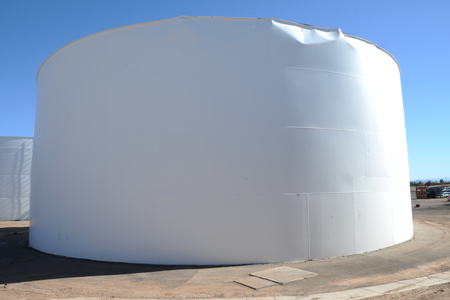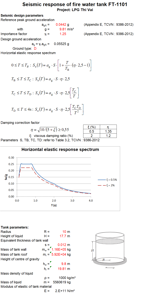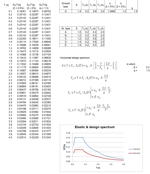Seimic Response of Liquid Storage Tank

Description
Seimic Response of Liquid Storage Tank
<p>Calculating the seismic response of liquid storage tanks involves determining the potential effects of earthquake ground motions on the tank structure and its contents. The analysis aims to ensure the tank's safety and integrity during seismic events. Here is a general outline of the process:</p>
<ol>
<li>
<p>Establish seismic design parameters: Determine the seismic hazard level for the tank location, considering factors like earthquake magnitude, distance to the fault, local site conditions, and soil properties. Obtain ground motion parameters, such as peak ground acceleration (PGA) and response spectrum, from seismic design codes or site-specific studies.</p>
</li>
<li>
<p>Tank and liquid properties: Collect information about the tank's dimensions, material properties, and structural details, along with the characteristics of the stored liquid (density, viscosity, etc.).</p>
</li>
<li>
<p>Simplified analysis methods: For preliminary analysis, simplified methods such as the equivalent static load method or the impulsive-convective approach can be employed. These methods involve representing the seismic forces as equivalent static loads acting on the tank and liquid, considering both the impulsive and convective components of the liquid response.</p>
</li>
<li>
<p>Finite element analysis: For a more detailed and accurate assessment, a finite element analysis can be performed. Develop a numerical model of the tank and the stored liquid, considering the interaction between the structure and the fluid. Apply the seismic ground motion as input to the model and analyze the resulting response.</p>
</li>
<li>
<p>Evaluate tank response: Assess the tank's structural response, including stresses, deformations, and potential failure modes, such as buckling, yielding, or fatigue. Check if these values are within acceptable limits, as defined by the relevant design codes or guidelines.</p>
</li>
<li>
<p>Evaluate liquid response: Analyze the liquid's response to the seismic excitation, including hydrodynamic pressures, sloshing behavior, and the potential for liquid spillage or overflow.</p>
</li>
<li>
<p>Design modifications: If the analysis indicates that the tank or its contents may be at risk during a seismic event, consider implementing design modifications, such as adding stiffeners, increasing wall thickness, or changing the tank geometry, to improve the structure's seismic performance.</p>
</li>
<li>
<p>Iterative process: Repeat the analysis and design process iteratively until the tank's seismic response is within acceptable limits, ensuring the safety and integrity of the tank during seismic events.</p>
</li>
</ol>
<p>It is essential to consult relevant design codes, guidelines, and local regulations when performing a seismic analysis of liquid storage tanks, as these provide specific requirements and procedures tailored to the type of tank and the seismic hazard level</p>Calculation Preview
Full download access to any calculation is available to users with a paid or awarded subscription (XLC Pro).
Subscriptions are free to contributors to the site, alternatively they can be purchased.
Click here for information on subscriptions.
Comments: 1
×
johndoyle-admin
2 years ago
Thanks for your contribution I have awarded a 3 month extension to your XLC Pro subscription by way of thanks. [Admin]




